Acta Materialia Silver Medal
The deadline for nominations for all Acta Materialia and Acta Biomateriala awards is February 1st each year. For the Acta Materialia Silver medal and the Acta Biomaterialia Silver medal, the nominees must be 45 years or younger on December 31 the previous year.
The Acta Materialia Silver Medal intends to honor and recognize scientific contributions and leadership from academic, industry and public sector leaders in the midst of their careers. Many awards recognize outstanding young investigators or integrated contributions throughout a career. The Silver Medal is established to recognize significant research contributions that are recent and timely. Specifically, the awardee will have made significant contributions through one or more of the following means:
- a theoretical or experimental discovery of a new principle in materials science,
- development or invention of a new process or product in the materials engineering field, and/or
- distinguished leadership or service rendered to the profession of materials science and engineering
The nominee should be 45 years of age or under on the December 31 prior to the February 1 nomination deadline. Exceptions may be made for an interruption in career progression due, for example, to family or military service.
The Silver Medal Award consists of a silver medal, an inscribed certificate, and an honorarium of US$5000.
Candidates for this award may be proposed by any scientist/engineer/practitioner or any materials related society, previous Acta award recipients, Sponsoring or Cooperating Societies of Acta Materialia, Inc., and Editors of the Acta Materialia journals.
The nomination package should contain
- A statement by the nominator (two pages maximum) specifying the candidate’s suitability for the award with respect to:
- Specific and clearly defined recent research achievements that form the basis for the recognition
- The impact of these achievements in relationship to the relevant materials community**
- Indicators that the candidate is a recognized leader in his or her field
- A curriculum vitae that highlights recent research/translation activity, contributions, and leadership
- Letters of support from up to three distinguished scientists in the field
- A citation of not more than 30 words
**Please emphasize the nominee’s impact on their research field, rather than the metrics on their publications.
Nominations remain in effect for three years unless withdrawn or re-endorsed, with additional justification, for an additional two-year period. Current members of the Acta Materialia Board of Governors and of the Award Selection Committee are not eligible.
The Award Selection Committee is formed of five judges, themselves distinguished members of the materials community.
The Acta Materialia Silver Medal is awarded each year, unless the judges feel no candidate is qualified. The presentation is made at a venue approved by the Acta Materialia Executive Committee. The Award will not be bestowed in absentia except under extraordinary circumstances.
Nominations should be submitted to the Executive Secretary (Prof. Carolyn Hansson, [email protected]), as a single file document preferably in PDF or Word format.
Acta Materialia, Inc.
Acta Materialia, Inc. (http://www.actamaterialia.org) is a non-profit organization representing 36 professional societies worldwide. It is dedicated to disseminating the knowledge of science and engineering of materials, primarily by publishing high quality journals covering all aspects of the multidisciplinary field of materials science and engineering, including biomaterials, nanomaterials, materials chemistry and physics. The corporation publishes four journals in collaboration with Elsevier: Acta Materialia, Scripta Materialia, Acta Biomaterialia, and Materialia.
Acta Materialia Silver Medal Award Recipients
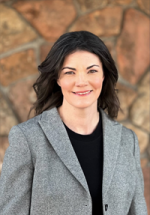
Corinne E. Packard
The recipient of the 2025 Acta Materialia Silver Medal is Dr. Corinne E. Packard. She is appointed as a Professor at the University of Southern California in the Mork Family Department of Chemical Engineering & Materials Science in the Viterbi School of Engineering starting in the 2024/2025 academic year. From 2010-2024, Dr. Packard progressed through the professorial ranks in the George Ansel Department of Metallurgical and Materials Engineering at the Colorado School of Mines while simultaneously jointly appointed at the National Renewable Energy Laboratory. Her primary research center affiliations included the Colorado Center for Advanced Ceramics, National Center for Photovoltaics, and Renewable Energy Materials Research Science and Engineering Center.
Dr. Packard earned her Ph.D. from the Department of Materials Science & Engineering at the Massachusetts Institute of Technology, following an undergraduate degree in the same department. Her early work established fundamental aspects of strain localization at the nanoscale in amorphous metals, leading to the discovery that sub-threshold, apparently elastic, mechanical cycling results in strength-increasing local structural changes. Following completion of her Ph.D., she expanded her research interests into microelectronics processing and optoelectronics as a post-doctoral researcher in the Organic and Nanostructured Electronics Lab at MIT.
Dr. Packard researches fundamental and applied mechanics of materials. Her research has elucidated principles and mechanisms of deformation behavior in brittle materials at the micro- and nanoscales. She tackles these diverse problems in ceramics and semiconductors by applying her deep interest in understanding how complex stress state can be manipulated to yield desirable mechanical behavior in materials. Across her research portfolio, she transforms basic science research into science-guided technology development in the areas of microelectronics, solar energy, and aerospace ceramics towards improving sustainability, energy efficiency, and responsible materials utilization.
Her work in engineered fracture of photovoltaic semiconductors promises to dramatically reduce cost and improve materials’ utilization in the highest efficiency photovoltaic materials through wafer reuse with controlled spalling. In controlled spalling, a subsurface fracture parallel to the substrate surface allows exfoliation of multilayer devices without inserting crystallographic defects into the epitaxial template. She developed low-cost, industrially scalable processes and grew high efficiency devices on the fracture surfaces resulting from controlled spalling. These accomplishments were facilitated by collaborations with researchers at the National Renewable Energy Laboratory, and support from DOE, DOD, and industrial sponsors.
With the support of an NSF CAREER award and technology development grants, Dr. Packard identified complex deformation phenomena in rare-earth orthophosphate ceramics with important implications for vibration damping and ceramic matrix composite performance for high-temperature aerospace applications. Findings of complex mechanical deformation behavior driven by triaxial stress states include reversible, superelastic twinning behavior and shear-stress-induced reduction of the activation requirements for phase transformation.
Dr. Packard received the AIME Robert Lansing Hardy Award, recognizing exceptional promise of a successful career; an NSF Early Career Faculty Development Award; and the Colorado School of Mines Faculty Excellence Award, which is the highest annual award at Mines, given for meritorious achievement in teaching and scholarship. She has supported the materials community as a conference and workshop organizer, chair of the TMS Nanomechanical Behavior of Materials Committee, and chair of the American Ceramic Society Members Services Committee starting in fall of 2024.
Dr. Packard will receive the Acta Materialia Silver Medal at the 2025 TMS Annual Meeting in Las Vegas, Nevada and will present highlights of her research at the Acta Materialia Symposium during that meeting.
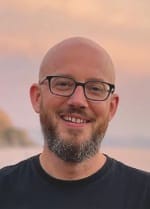
Jean-Philippe Couzinié
The recipient of the 2024 Acta Materialia Silver Medal is Jean-Philippe Couzinié, Professor at the University Paris Est-Créteil (UPEC) and at the Institute of Chemistry and Materials Science Paris-Est (ICMPE), CNRS (Thiais, France). Since 2021, he is also the adjunct Professor of the Department of Materials Science and Engineering at the Ohio State University (Columbus, OH, USA).
Jean-Philippe Couzinié received an engineering degree in Materials Science in 2000 from University Paris-XIII (Villetaneuse), a Master degree in 2001 and a Ph.D. degree in Metallurgy and Materials in 2004 from University Paris XI (Orsay). Dr. Couzinié joined the University Paris-XII (now University Paris-Est Créteil) in 2004 where he became associate Professor in 2006 and full Professor in 2021. He has visited the Ohio State University joining Prof. Mills’ research group for a sabbatical in 2020-2021. Finally, he also serves as Deputy Director in charge of pedagogy and student achievement for the University Institute of Technology Créteil-Vitry at UPEC.
Prof. Couzinié’s research team focuses on alloy design and microstructures and functions within the Metallurgy and Inorganic Materials Department at ICMPE. His research additionally focuses on the relationships between elementary deformation/hardening mechanisms and macroscopical behavior of metallic materials, from pure to complex concentrated alloys. In particular, he made significant contributions to the understanding of deformation mechanisms of refractory body centered cubic (BCC) high-entropy alloys (HEAs). His expertise on the relationships between underlying mechanisms and the mechanical behavior of HEAs have produced results that make Professor Couzinié one of the internationally recognized experts in the field.
During his thesis, he worked on the elementary mechanisms of interaction between dislocations and grain boundaries in a low stacking fault energy metal using conventional transmission electron microscopy (TEM) and diffraction contrasts. Using TEM, he also investigated the atomic structure of interfaces Beyond the purely fundamental aspect, this research was a step towards the interface engineering, and its influence on the modification of plastic behavior of copper and its alloys.
His research activities gradually diversified. His work on the influence of interstitials on the mechanical behavior of titanium with Dr. Véronique Doquet at the Solid Mechanics Laboratory/Ecole Polytechnique has led to significant results on the specific impact of oxygen on critical resolved shear stresses for prismatic, basal and first-order pyramidal systems and also to the advance of knowledge of plastic micro-mechanisms investigated by in-situ TEM straining tests.
In 2016, he obtained the first large grant on HEAs provided by the project-based funding agency for research in France, Agence Nationale de la Recherche, to develop new material solutions for aerospace applications leading to several publications and a patent application with Safran. He also contributed to the design of new Ti-based complex concentrated alloys with significant strain-hardening attributed to the transformation-induced plasticity effect by combining approaches, such as the d-electron alloy design.
His contributions – particularly in the HEA field – have led to publications in peer-reviewed journals, collaborative projects in France and abroad and several invitations to International Conferences. He serves on the scientific advisory board of the International Conference of High Entropy Materials (ICHEM) and will be Chair of the next ICHEM Conference in Paris in 2026. He has also been involved in the organization of symposia for different Conferences and Workshops (Euromat, Thermec) and in the emergence of the French Research Network on HEAs, created in 2018. He is also a member of the Editorial Advisory Board for the High Entropy Alloys & Materials journal.
Professor Couzinié will receive the Acta Materialia Silver Medal during the TMS 2024 Annual Meeting to be held in Orlando, FL, in March 2024. He will also present highlights of his research at the Acta Materialia Symposium during the meeting.
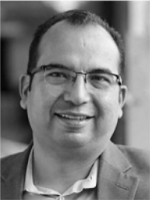
Raymundo Arróyave
The recipient of the 2023 Acta Materialia Silver Medal is Professor Raymundo Arróyave, the Segers Family Dean’s Excellence Professor of Materials Science and Engineering. He is also a Presidential Impact Fellow and a Chancellor EDGES Fellow of the Texas A&M University and the Texas A&M University System, respectively. He holds joint courtesy appointments in the J. Mike Walker ‘66 Department of Mechanical Engineering and the Wm Michael Barnes ‘64 Department of Industrial and Systems Engineering.
Raymundo Arroyave received a B. Sc. Degree (1996) in Mechanical and Electrical Engineering from the Instituto Tenológico y de Estudios Superiores de Monterrey (México), followed by a M. Sc. (2000) in Materials Science and Engineering and a Ph. D. (2004) in Materials Science from the Massachusetts Institute of Technology. After a postdoctoral position at Penn State University, he joined the Department of Mechanical Engineering at Texas A&M University in 2006. In 2013, he became one of the founding faculty of the (then new) Department of Materials Sci-17 ence and Engineering at Texas A&M. He is a Full Professor since 2017.
Over the past two decades, Dr. Arroyave’s research interest has been in computational materials science with special focus on problems ultimately related to the thermodynamics and kinetics of materials. His group uses several computational tools across multiple length-scales, ranging from Density Functional Theory through Phase Field Modeling, and even Computational Fluid Dynamics in order to understand process-structure-property relationships in both structural and functional materials. Recently, he has focused a large portion of his efforts to develop simulation-driven and machine learning/artificial intelligence-assisted materials discovery and design. He currently leads several medium to large scale multi-institutional, multi-PI, multi disciplinary efforts dedicated to the development of efficient frameworks for the rapid discovery of materials, focusing on performance under extreme conditions.
He has been recognized on several occasions for his contributions. He is an ASM Fellow (2020), a TMS Brimacombe Medalist (2019), a recipient of the NSF CAREER Award (2010). He and his co-authors have received numerous Best Paper Awards by several journals and peer-reviewed conferences. He was also selected to give an AIME-TMS Anniversary Keynote talk in 2021.
Dr. Arroyave is also an active member of the scientific community. He currently serves as Associate Editor of Materials Letters, Integrating Materials and Manufacturing Innovation and the Journal of Phase Equilib-ria and Diffusion. At TMS, he served as Chair of the Functional Materials Division, chair of the Technical Division Council as well as the Board of Directors. He was Chair of the Alloy Phase Diagram Committee at ASM International. He has co-/organized close to two dozen symposia and two major conferences and is the main organizer, since 2011 of the Computational Materials Science Summer School at Texas A&M University.
He continues to serve on numerous technical and functional committees at both professional societies. He has also participated in several study reports on multi-scale computational materials science and workforce development for the Materials Genome Initiative. He currently serves in the Condensed Matter and Materials Research Committee of the National Academies of the United States of America. He also serves in other major committees at the national level.
Professor Arróyave will receive the 2023 Acta Materialia Silver Medal at the TMS Annual Meeting in San Diego, CA, March 19-23, 2023.

David Dye
The recipient of the 2021 Acta Materialia Silver Medal is David Dye, Professor of Metallurgy at in the Department of Materials at the Imperial College London and Royal Society Industry Fellow with Rolls-Royce.
Professor David Dye received his BA in Natural Sciences in 1997 and completed his PhD in 2000, both at the University of Cambridge. He worked in strategy consulting and was a National Sciences and Engineering Research Council Visiting Fellow with NRC-CNRC at the AECL Chalk River Laboratories in Ontario, Canada. He then took up a faculty position at Imperial College in 2003, becoming a Professor in 2015.
Professor Dye works predominantly on the micromechanics, microstructure and alloy design of titanium alloys and nickel and cobalt/nickel superalloys for jet engines, but also has longstanding interests in nuclear reactor zirconium and primary circuit materials, in NiTi elastocalorics for heat pumps and actuators and in medium-manganese auto body TWIP steels. He is internationally recognised for his work on dwell fatigue in Ti alloys and in the relationship between alloy processing, microstructure and in-service performance, and on the resolution of safety-related concerns in jet engine Ti.
• His thesis work sponsored by Rolls-Royce, was on the weldability on Ni superalloys, which has become newly relevant to the development of cracking-free, high integrity microstructures and alloys in additive manufacturing.
• His work on Ti alloy processing, performance and the micromechanisms of fatigue began with the effect of crystallographic orientation and micro-texture on high cycle fatigue crack initiation in Ti-6Al-4V. This pioneered the in-situ FIB lift out technique for the examination of slip mechanisms in fatigue facets, and the correlation of fatigue surface features to the underlying grain orientations from cross-sectional EBSD.
• Interstitial contamination, eg with O or N, and H-associated embrittlement during halide stress-corrosion cracking, occasionally present nuisance airworthiness concerns. His work in this area allowed the retirement of another safety-related concern, resulting in a 2014 Rolls-Royce Defence Aerospace award. The great difficulty with hydrogen is its unequivocal detection in the microscope; his work in this area with Professor Gault at MPIE/Imperial has enabled the development of the ability to detect solute H at the nanoscale using atom probe tomography.
• Professor Dye was the first to show that the newly (re)discovered biomedical ??-Ti Gum metals had such an apparently low modulus due to the superelastic stress-induced ??” transformation.
• Following Sato et al’s 2006 announcement of the discovery of a new Co3(Al,W) phase showing the flow stress anomaly, David has followed a thread of work to develop polycrystalline Co/Ni superalloys.
• Returning to novel alloy development, from the perspective of interface theory, there is a natural link between the precipitation of ?? -Ti, superelasticity in NiTi and ??-Ti, and twinning. Starting from CP Ti, work proceeded in TWIP steels, in particular showing that grain size control is an effective route to raise the initial yield stress of TWIP steels, without affecting their high-rate performance, e.g. in blast for armour or auto bodies, and more recently that lower-Mn, austenite+ferrite high strength TWIP steels can be fabricated by a hot working route. He has also shown that the TWIP effect can be developed in ??-Ti alloys, allowing higher specific strengths and work hardening rates to be achieved, although, as with Gum metals, w precipitation may still prove problematic in commercial application.
He has been strongly involved in the organisation of symposia at the TMS annual meeting and the Ti and
HTAC committees over the last 15 years, as well as workshops on Dwell Fatigue and Co/Ni superalloys. He has received a number of awards, including the 2002 and 2005 ASM Grossman Award, the 2005 10M3 Grunfeld Medal, 2010 IOM3 Harvey Flower Titanium prize, 2017 IOM3 Cook/Ablett and 2018 TMS EPD Division Science awards. He has also been active in mentoring early-stage researchers, with seven of his previous students and postdoctoral researchers having taken up faculty positions and 33 PhDs completed, the majority of whom now work in the aerospace industry and the speciality metals supply chain.
Professor Dye will receive his Silver Medal during the 2021TMS Spring Meeting and Exhibition in Anaheim, California, 27 February - 3 March, 2022.
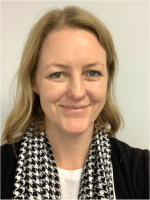
Julie Carney
The recipient of the 2021 Acta Materialia Silver Medal is Professor Julie Cairney, the Director of the Australian Centre for Microscopy and Microanalysis at the University of Sydney and CEO of Microscopy Australia, an Australian National Collaborative Infrastructure Initiative. Prof. Cairney is a specialist in using advanced microscopy to study the three-dimensional structure of materials at the atomic scale. She is also a passionate contributor to the broader scientific community, and was selected as one of the World Economic Forum’s 50 Young Scientists of 2016.
Prof. Cairney has made vital contributions to developing and applying new microscopy technologies that have been adopted in microscopy labs around the world and allowed her to make an impact across a range of research fields. She is a world expert in the development and application of atom probe microscopy techniques.
Recently, she established in her laboratory, a custom-designed cryogenic transfer set-up that has allowed her to provide world-first 3D maps that show the distribution of hydrogen around the common microstructural features in steels. This work included the first ever observations of hydrogen at dislocations, finally providing a concrete validation of the theory of hydrogen-enhanced dislocation mobility as a mechanism of hydrogen embrittlement. It also provided the first direct observations of hydrogen at the interface between incoherent precipitates and the surrounding steel matrix, settling a long-standing debate around whether hydrogen trapping is an interfacial effect (it is). It is expected that this cryo-transfer protocol will become a routine approach to study hydrogen in materials in the future. It can also be used for cryogenically frozen soft matter, potentially opening up a whole new application area for atom probe microscopy.
In a different area of microscopy, Prof. Cairney has worked with one of her technical staff, Patrick Trimby, in developing materials applications for a new technique for crystal orientation mapping in the scanning electron microscope, called ‘transmission Kikuchi diffraction’. A 10-fold increase in resolution has allowed orientation mapping methods to be applied to the study of nano-scale microstructural features. Their paper on this topic was one of the most downloaded papers in Acta Materialia in 2014. With its ease of set-up, this method is rapidly becoming a standard characterization tool in microscopy labs worldwide.
She has also made significant contributions to industry, having have worked with BlueScope Steel to design a new range of strip cast steels that are strengthened by the atomic-scale clustering of atoms, and with Weir Minerals Australia to produce tougher, wear resistant alloys for components to reduce the downtime in Australian mines. Both of these products reached commercial production trials. She has also founded a successful start-up company that sells microscopy components developed in her lab, now servicing over 30 laboratories worldwide.
As CEO of Microscopy Australia, she champions open access microscopy infrastructure in Australia, ensuring that Australian materials researchers have access to essential microscopy infrastructure, no matter where they work. In this role, she has overseen a significant expansion to Microscopy Australia’s open-access online learning modules, MyScope (https://myscope.training/), which are used by more than 150,000 researchers each year, many of them in the field of materials. As a World Economic Forum Young Scientist, she co-authored a Code of Ethics that has been endorsed by Sir Philip Campbell, the Editor in Chief of the journal Nature .
She serves as Vice President of the International Field Emission Society (which represents the atom probe community). She is an advisory board member for the microscopy journal Ultramicroscopy. She has chaired panels for the Australian and New Zealand funding agencies and served on panels for their most prestigious schemes (Centres of Excellence and Marsden). She has chaired a number of conferences in her field including CAMS, Australia’s national materials conference, and was the scientific chair (Physical Sciences) for the International Microscopy Congress, Sydney, 2016 (the leading microscopy conference worldwide, which typically attracts ~3000 attendees).
Prof. Cairney will receive the Acta Materialia Silver Medal at the 150th Anniversary TMS meeting to be held in Orlando, Florida in March 2021.
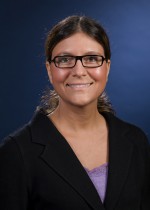
Diana Lados
The recipient of the 2020 Acta Materialia Silver Medal is Professor Diana Lados, Milton Prince Higgins II Distinguished Professor of Mechanical Engineering and Materials Science at Worcester Polytechnic Institute (WPI). She is also the founder and director of WPI’s Integrative Materials Design Center (iMdc), an industry-government-university consortium with more than 35 members representing all major transportation and defense industries, national laboratories and other governmental organizations, as well as several partner universities.
Prof. Lados earned her B.S./M.S. in Mechanical Engineering from the Polytechnic University of Bucharest in 1997, her second M.S. in Mechanical Engineering from Southern Illinois University at Carbondale in 1999, and her Doctorate in Materials Science and Engineering from WPI in 2004. She held Post-Doctoral, Research Scientist, and Research Prof. positions at the Metal Processing Institute (MPI) at WPI until 2007, when she joined the Mechanical Engineering faculty as an assistant professor and established the iMdc consortium. She was tenured and promoted to associate professor in 2012, was awarded WPI’s Milton Prince Higgins II Distinguished Professorship in 2014, and became a full professor in 2018. She also holds affiliate faculty appointments in WPI’s departments of Physics and Chemical Engineering.
Prof. Lados has brought significant research contributions in the areas of materials and advanced manufacturing, with a special focus on material design, characterization, evaluation, and optimization for fatigue, fatigue crack growth, thermo-mechanical fatigue, creep, and fracture resistance. Her work has established fundamental relationships between materials’ characteristic microstructures and their behavior and properties, and shed light on underlying failure mechanisms – critical considerations in material design and process optimization. She has also developed computational methods and tools that link materials’ performance to their manufacturing processes and resulting microstructures, and provide accurate life predictions. Her advances have had a major impact on both manufacturing and design communities, and have found broad and diverse uses in critical high-integrity structural and elevated temperature applications in transportation and other industries. Prof. Lados has integrated the knowledge, databases, tools, and strategies that she has developed into a unified methodology for sustainable material-process-component design and manufacturing for performance and reliability, creating interdisciplinary bridges between materials science, mechanical engineering, and physics. This integrated material design approach is the foundation of the iMdc consortium, and for its application to the optimization of high-integrity aluminum alloys, Prof. Lados was granted the prestigious CAREER Award from the National Science Foundation (NSF).
Prof. Lados has been at the forefront of research on additive manufacturing (AM) for more than a decade, having developed a fundamental understanding of AM materials and optimization guidelines for their processing and properties, while building comprehensive databases and supporting ICME tools. These advances are helping to expand the use of AM technology to high-integrity structural applications, and are providing original and much-needed methodologies for rapid material and product qualification, standardization, and repair. Her research on additive manufacturing encompasses several materials, fabricated by both direct energy deposition and powder bed processes, using laser and electron beams as heat sources. Her integrated work on advanced manufacturing also includes other technologies such as cold spray processing, friction stir welding, and metal-matrix nano-composites fabrication, and has been consistently funded by both industry and the federal government, through various DoD and NSF grants. These also include equipment grants such as the Defense University Research Instrumentation Program (DURIP) award from DoD and a Major Research Instrumentation (MRI) award from NSF, which have facilitated advanced characterization studies using combined digital image correlation (DIC), electron backscatter diffraction (EBSD), and tomography, as well as non-destructive evaluation studies for in-situ damage detection and monitoring at ambient and high temperatures. This work has resulted in key experimental and computational developments that support the integrated material-process-component design, optimization, and qualification, including creation of property databases and life prediction methods for high-integrity applications. The work has also led to two manufacturing patent developments.
For her work, Prof. Lados had been distinguished with several national and international awards and honors, which include a Fellow of ASM International and a Fellow of Alpha Sigma Mu; the inaugural Constance Tipper Silver Medal from the World Academy of Structural Integrity; the ASM Silver Medal; the Ralph R. Teetor Educational Award from SAE International; the Brimacombe Medalist Award, the Early Career Faculty Fellow Award, and the Robert Lansing Hardy Award from The Minerals, Metals & Materials Society (TMS). At WPI she was recognized with both Sigma Xi Outstanding Junior and Senior Faculty Researcher Awards, and she was named in 2012 one of the 20 “Women to Watch” in New England for significant technical advancements and leadership. She was also selected by the National Academy of Engineering (NAE) to participate in the prestigious Frontiers of Engineering symposia for both exceptional research and innovative education.
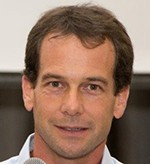
Xavier Sauvage
The recipient of the 2019 Acta Materialia Silver Medal is Xavier Sauvage, Research Director at CNRS (National Scientific Research Center – France) and Deputy Director of the “Groupe de Physique des Matériaux” (Institute of Physics of Materials) located at the University of Rouen Normandie in France. Dr. Sauvage will receive his Silver Medal during the 2019 TMS Spring Meeting and Exhibition in San Antonio, Texas.
Xavier Sauvage graduated in mechanical engineering from Ecole Normale Supérieure de Cachan (1993-1996) and received a master degree (1996) and a PhD degree (2001) in Physics of Materials at the University of Rouen Normandie. Here, he began to develop expertise on nanostructured metallic alloys, phase transformations, atom probe tomography and transmission electron microscopy. After a short period as a Post Doctoral Fellow at the Max Planck Institute of Stuttgart, he joined the CNRS (National Scientific Research Center – France) for a research scientist position at the “Groupe de Physique des Matériaux” (Institute of Physics of Materials) located at the University of Rouen Normandie in France.
Dr. Savauge has an international reputation as an expert in the field of high resolution chemical analysis (Atom Probe Tomography and analytical Transmission Electron Microscopy) in metallic alloys and, especially, in severely deformed and nanostructured materials. He has developed a large network of international collaborators and has been leader of numerous international projects. His expertise is not limited to characterization down to the atomic scale, but also covers fundamental mechanisms of phase transformations in metallic alloys, the important role of defects and particularly those resulting from high strains. A significant part of his projects has also been dedicated to the relationships between nano-scaled features and material properties. Moreover, part of his activity was devoted to collaborations with industrial partners (Arcellor-Mital, Posco, Michelin, ACOME, Manoir Industries, Nexans). In 2016, he founded the joint research lab IPERS (“Innovation and Performance of Refractory Steels”) with the R&D Department of Manoir Pîtres. Also in 2016, he was promoted to Deputy Director of the GPM (Groupe de Physique des Matériaux), an institute with up-to-date advanced microscopy facilities (including two corrected TEMs, three dual beam SEM-FIB, four atom probes and other equipment). The GPM is organized in five departments dedicated to scientific instrumentation and material science with a total staff of about 170.
His notable research contributions include:
- Three-dimensional atomic scale imaging of (i) co-deformation in multiphase alloys subjected to large strains leading to an understanding of the fragmentation mechanisms in the case of brittle behaviour, and (ii) strain-induced mixing in immiscible model binary systems such as Cu-Fe or Cu-Cr and understanding of the mechanisms leading to the formation of super saturated solid solutions and in metal matrix composite wires (Cu-V, Cu-Nb) processed by drawing.
- Advancing the understanding of (i) strain-induced carbide decomposition in steels, which limits the ductility of cold drawn pearlitic steels; (ii) deformation-induced phase separation and precipitation in model binary aluminium alloys (AlZn, AlCu) and (iii) the mechanisms leading to non-equilibrium grain boundary segregations in severely deformed steels and Al alloys.
These contributions have been recognized by national and European societies: Dr. Sauvauge has been honoured in 2009 by the Société Française Métallurgie et de Matériaux (SF2M, French Metallurgy and Material Society) receiving the Jean Rist Medal and in 2010 by the Federation of European Materials Societies with the FEMS Young Lecturer Award.
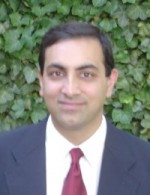
Nikhilesh Chawla
The recipient of the 2018 Acta Materialia Silver Medal is Nikhilesh Chawla, the Director for the Center for 4D Materials Science and Fulton Professor of Materials Science and Engineering (MSE) at Arizona State University.
Prof. Chawla received his Ph.D. in Materials Science and Engineering from the University of Michigan in 1997. Prior to joining Arizona State University in 2000 he was a postdoctoral fellow jointly at Ford Motor Company and the University of Michigan, and a senior development engineer at Hoeganaes Corporation. He served as acting chair of the MSE program at ASU in 2010.
Prof. Chawla’s research interests encompass the deformation behavior of advanced materials at bulk and small length scales, including Four Dimensional (4D) materials science, environmentally-benign metallic alloys, composite materials, and nanolaminates. He has published widely and his research is highly cited. He is the author of the textbook Metal Matrix Composites (co-authored with K.K. Chawla), published by Springer. The 2nd edition of this book was published in 2013.
Prof. Chawla is a Fellow of ASM International and past member of The Minerals, Metals, and Materials Society (TMS) Board of Directors. He’s the recipient of the New Mexico Tech Distinguished Alumnus Award for 2016. In addition, he was named 2016 Structural Materials Division Distinguished Scientist/Engineering Award, as well as the 2016 Functional Materials Division Distinguished Scientist/Engineering Award, both from TMS; 2013 Brimacombe Medalist Award from TMS; 2011 Distinguished Lectureship given by Tsinghua University, China; 2004 Bradley Stoughton Award for Young Teachers, given by ASM International; and the 2006 TMS Young Leaders Tutorial Lecture. He also received the National Science Foundation Early Career Development Award and the Office of Naval Research Young Investigator Award.
Prof. Chawla is editor of Materials Science and Engineering A published by Elsevier (2016 Impact Factor of 3.1). He also serves on the Editorial Boards of Advanced Engineering Materials, Materials Characterization, and Materials Chemistry and Physics. He has served or is serving on several external advisory boards, including that of Naval Research Laboratory, the Advanced Photon Source at Argonne National Laboratory, and New Mexico Tech. His work has been featured on the show Modern Marvels on the History Channel, R&D News, Fox News, and the Arizona Republic. He serves on ASU President Michael Crow’s Academic Council, which provides input to the president on academic, structural, and strategic matters.
Professor Chawla will present an overview of his research at the Acta Awards Symposium and receive the Silver Medal at the Awards Ceremony during the TMS Annual Meeting in Phoenix, AZ in March 2018.

Jingyang Wang
The recipient of the 2017 Acta Materialia Silver Medal is Jing-yang Wang, the distinguished professor and division head in the High-performance Ceramic Division at the Shenyang National Laboratory for Materials Science and Institute of Metal Research, Chinese Academy of Sciences. He is also the assistant director of Shenyang National Laboratory for Materials Science.
Jingyang Wang received the B.A. degree in Physics in 1992 from Peking University, M.A. degree in 1995 and Ph.D. degree in 1998, both in Materials Physics from Institute of Metal Research, Chinese Academy of Sciences. He joined the faculty in Institute of Metal Research where he became the assistant professor in 1998, associate professor in 2002, and full professor in 2006. He was the visiting scientist at International Centre for Theoretical Physics (Italy) in 2001, University of Trento (Italy) in 2001, and International Center for Young Scientists (ICYS) at National Institute of Materials Science (Japan) in 2007.
Professor Wang focused over 15 years of research activities in the area of materials science of advanced engineering ceramics. He has published more than 180 peer-reviewed SCI papers (H-index factor 36), including 30 in Acta Materialia and Scripta Materialia, and has 17 patents in the field of ceramics. In addition, he presented ~50 keynote/invited talks and served 25 advisory board members and symposium organizers in international conferences. He is internationally recognized for his scientific contributions and leadership in high-throughput materials design and modeling, novel methods for processing bulk, low-dimensional and porous ceramic materials, and multi-scale structure-property relationship of high performance structural ceramics. His recent notable research contributions are:
He established the theoretical criteria for predicting damage tolerant/quasi-ductile ceramics based on DFT calculations of chemical bonding heterogeneity and specific mechanical properties. Many new families, including MAX phases, RE2SiO5, RE2Si2O7 and M3AlN, were theoretically predicted and experimentally validated as novel damage tolerant/quasi-ductile ceramics.
He proposed the strategic knowledge on tailoring the mechanical properties of nano-laminated carbides and nitrides by means of modifications on valence electron concentration and structural units in crystal structure, and further provided crucial guidelines on experimental activities. His work pioneered extensive investigations of the new family of nano-laminated carbides with the chemical formula of (MC)nAl3C2 and (MC)nAl4C3 (M=Zr and Hf, n=1, 2, 3, and 4).
He presented the concept of optimal irradiation damage tolerance of transitional metal carbides (MAX phase and ZrC1-x) through proper design of intrinsic point defect sinks, including the nano-twinned crystal structure and self-assembly of carbon vacancies, respectively, inside the crystal structures. The knowledge inspired his challenging work on the low-temperature fabrication of the integrated Ti-Cr-Zr-Al-Si-C coating for accidental tolerant Zircaloy fuel cladding.
He developed the integrated theoretical and experimental strategy to conduct high-throughput selection of low thermal conductivity ceramics, and have found more than 20 novel candidates. He also discovered an interesting pressure-induced softening of low-lying optic and acoustic phonon modes and significantly enhanced anharmonicity of Umklapp phonon scattering in complex silicates. The new mechanism could be adopted for phonon engineering and thermal conductivity modulation in lightweight and sustainable low thermal conductivity ceramics without heavy and/or rare earth elements.
He disclosed the diverse dependences of macroscopic performance, including mechanical and thermal properties, as well as high temperature water vapor and CMAS corrosion resistances on chemical composition and crystal structure of dense and phase-pure X2-RE2SiO5 and β-RE2Si2O7 rare-earth silicates. The information would initiate high-efficient materials design and optimization of RE-silicates for advanced T/EBC applications.
He adopted multi-phonon scattering mechanisms in porous high-temperature ceramics that achieved the balance of extremely low thermal conductivity and excellent thermal stability up to 1500 o C. The novel thermal insulation materials covered from highly porous Y2SiO5 and Y2Si2O7 silicates that are originally thermal insulators in dense ceramics to nano-SiC and nano-Si3N4 particle aggregates which intrinsically have very high thermal conductivity in bulk forms.
His contributions have been recognized on many scientific advisory boards and committees of the American Ceramic Society (ACerS) and the American Society of Metals International (ASM Int.) and serves on the International Advisory Board of UK CAFFE consortium (University of Cambridge, Imperial College London and University of Manchester) on ceramics for nuclear applications. He also served as the volume editor of Ceramic Engineering and Science Proceedings and is the book editor of Developments in Strategic Materials and Computational Design, both published by John Wiley & Sons, Inc., and is the Executive editor of Journal of Materials Science and Technology published by Elsevier.
Professor Wang’s scientific career has also been recognized with many awards and honors, including ASM-IIM Visiting Lecturer Award in 2016, Distinguished Professor of CAS Distinguished Research Fellow Program from Chinese Academy of Sciences (CAS) in 2016, National Leading Talent of Young and Middle-aged Scientist Award from the Ministry of Science and Technology of China in 2015, DisLate Shri Sardar Pratap Singh Memorial Award from the Indian Ceramic Society in 2015, JACerS Author Loyalty Recognition Award in 2014 and the Global Star Award Society in 2012 from the ACerS, Second Prize in 2012 and First Prize in 2011 for Science and Technology Progress Award from China and First Prize for Natural Science Award from Liaoning Province in 2005.
The Acta Materialia Silver Medal honors and recognizes scientific contributions and leadership from academic, industry and public sector leaders in materials research in the midst of their careers. The Silver Medal was established in 2016 and nominees are solicited each year from the Cooperating Societies and Sponsoring Societies of Acta Materialia. Inc. Professor Wang will receive the Silver Medal at the TMS Annual Meeting in San Diego in March 2017.